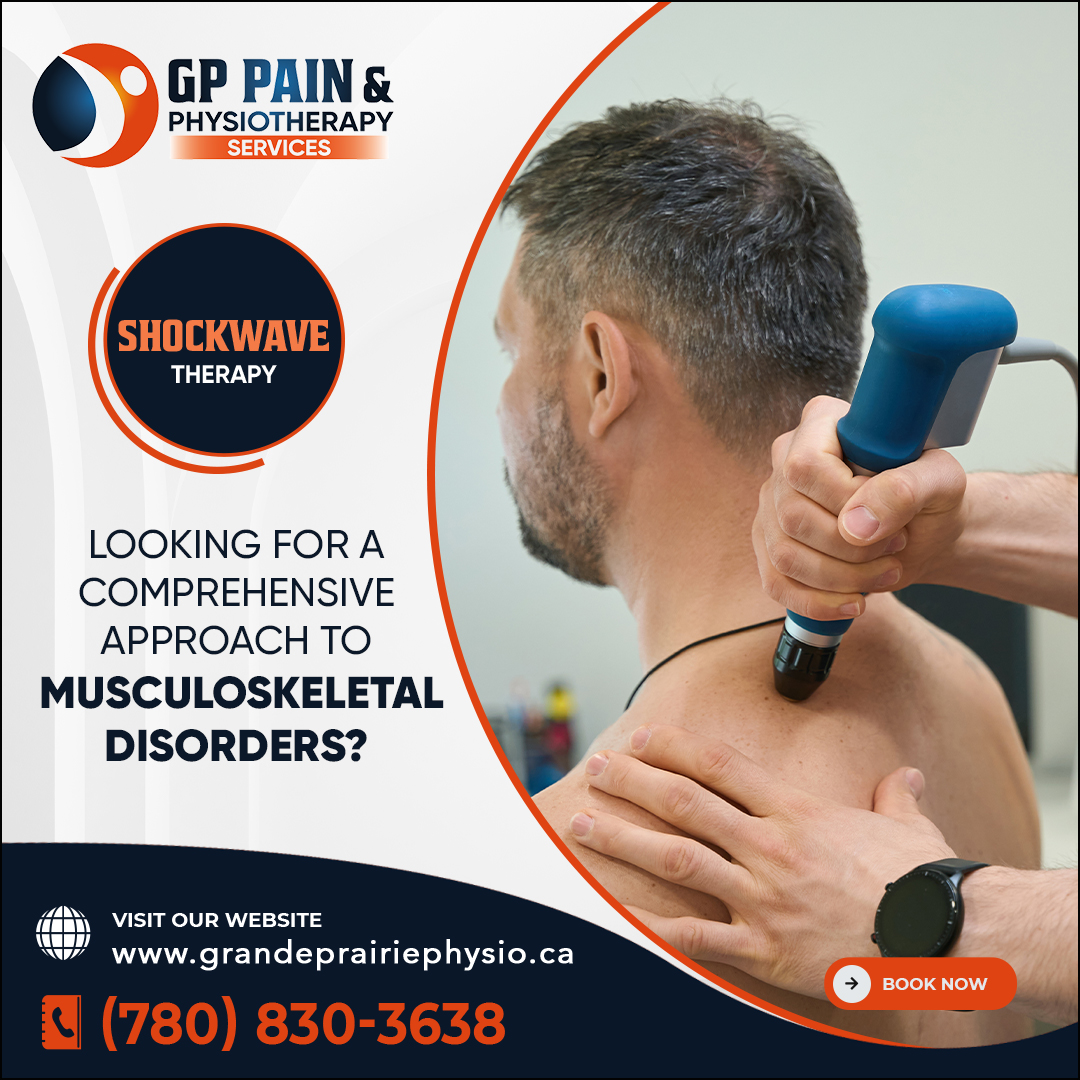
Shockwave therapy is a cutting-edge treatment used to address chronic pain and injuries, particularly in soft tissues like tendons, ligaments, and muscles. Shockwave Therapy Grande Prairie At GP Pain & Physiotherapy , shockwave therapy has proven effective for conditions such as plantar fasciitis, tennis elbow, and Achilles tendinopathy. If you’re considering shockwave therapy as part of your recovery process, it’s important to understand what to expect after your session, including potential side effects, recovery time, and the overall treatment process.
How Shockwave Therapy Works
Shockwave therapy uses high-energy sound waves to stimulate healing in injured tissues. The therapy works by promoting blood circulation, breaking down calcified deposits, and encouraging the body to repair damaged tissues. This non-invasive procedure typically involves the application of a gel and a handheld device that delivers pulses of sound waves to the affected area.
Immediate Post-Treatment Sensations
After undergoing shockwave therapy at GP Pain & Physiotherapy, you may experience some temporary effects. These sensations vary from person to person, but common experiences include:
Mild Discomfort or Soreness:
You may feel some soreness in the treated area, similar to the feeling after a deep tissue massage or a good workout. This is generally short-lived and should subside within a few hours to a day. The intensity of discomfort can vary based on the severity of the condition being treated and your pain threshold.
Redness or Warmth:
The treated area may appear slightly red or feel warm immediately after the session. This is a normal response to the sound waves stimulating blood flow in the area and should resolve shortly after treatment.
Temporary Swelling:
In some cases, there may be mild swelling around the area where the shockwaves were applied.
Aftercare and Recovery Guidelines
Post-treatment care is essential to maximize the benefits of shockwave therapy. Here’s what you can expect and do after your session:
Rest and Avoid Intense Activity:
It’s important to avoid strenuous activity or heavy physical exertion for at least 24 to 48 hours following treatment. While some people may feel fine to resume normal activities immediately, it’s best to allow your body time to heal and respond to the therapy.
Ice for Swelling or Pain Relief:
If you experience any discomfort or swelling, applying ice to the treated area can help alleviate symptoms. Ensure you wrap the ice pack in a cloth to protect your skin and avoid prolonged exposure to the cold.
Gentle Stretching and Movement:
After the initial recovery period, gentle stretching and light movement of the treated area can help reduce stiffness and promote healing. Your physiotherapist at GP Pain & Physiotherapy will provide you with personalized exercises to perform at home to aid recovery.
Long-Term Effects and What to Expect
While you may experience some immediate discomfort after shockwave therapy, the long-term benefits are typically felt after a few days to a week. The shockwaves stimulate tissue repair and the production of collagen, pain relief, improved mobility, and better tissue function. Here’s what you can expect in the weeks following your treatment:
Gradual Pain Reduction:
Pain relief is one of the primary benefits of shockwave therapy. Most people notice a reduction in pain after a few sessions, with lasting relief typically occurring after the second or third treatment.
Improved Range of Motion:
As the tissues heal, you may notice an improvement in joint mobility and flexibility, allowing for a greater range of motion in the affected area.
Cumulative Benefits with Ongoing Treatment:
Shockwave therapy often requires multiple sessions (usually 3 to 5 treatments) for optimal results. As each session builds upon the last, you may find that your pain continues to decrease over time, and your tissue function improves further.
When to Contact Your Physiotherapist
While most people recover well after shockwave therapy, it’s important to monitor your progress. If you experience severe pain, swelling, or any unusual side effects after treatment, it’s a good idea to contact your physiotherapist at GP Pain & Physiotherapy. They can provide guidance on next steps or adjust your treatment plan as needed.
Conclusion
Shockwave therapy can be a highly effective treatment for chronic injuries, providing long-lasting pain relief and promoting healing. At GP Pain & Physiotherapy in Grande Prairie, you can expect a safe and personalized treatment plan tailored to your specific needs. Understanding what to expect after your session, including the potential for mild discomfort, the need for rest, and the gradual improvement in pain and mobility, will help you make the most of this treatment. If you have any concerns or questions, don’t hesitate to reach out to your physiotherapist for support throughout your recovery journey.
#shockwavetherapygrandeprairie #shockwavetherapy #shockwavetherapynearme #gppainphysicaltherapy #grandeprairiephysiotherapy #physiotherapynearme #physiotherapygrandeprairie #physicaltherapygrandeprairie #physicaltherapynearme #physicaltherapy #physiotherapistclinic #physiotherapytclinic #physicaltherapyclinic